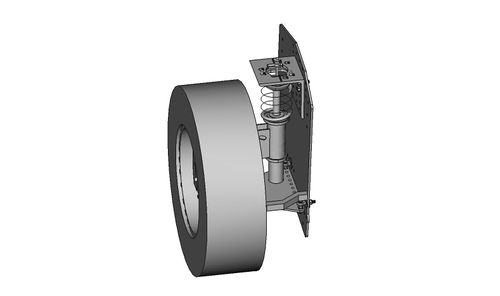OSE Wikispeed Local Motors Open Source Car Concept
Start with Wikispeed Frame from Wikispeed SGT01 page:
(image is STEP care of VariCAD Viewer)
Add a 50 hp Power Cube by Tom Griffing - to modify Wikispeed design to flexible hydraulic power.
Modify wheel drive for hydraulic motor drive.
Set up shop at Local Motors shop in Arizona. Fund via Kauffman Foundation to result in a minimum viable product in 3 months.
Next Steps
- Document the Steering module
- Document front brake module
- Design Interior Module for hydraulic pedals
- Extract carbon fiber composite techniques from Joe Justice
- Build an Aluminum version of Power Cube - simply with 4x4 tubing identical to steel tubing, but use 1/8" wall 4x4"s instead of 1/4" 4x4"s in steel.
- See Power Cube Modularity - tanks, engine, frame, hydraulics, and electrical are separate modules
- Selective Laser Sintering in Nylon 12 for hydraulic quick coupler fittings on low pressure side
Perspective from OpenSourceCitizen:
There is a reason that there are no hydraulic driven cars and very few/expensive add on hydraulic drive systems for big trucks, which only supplement the direct drive. The efficiency losses and heat build up is enormous with even an expensive, high-end hydraulic motor & pump when used in this type of application as compared to direct drive/mechanical. This is even more magnified when trying to use wheel motors(instead of motors powering the wheels thru a transmission or even just a standard axle differential), the speed and torque range is physics-impossible, especially with cheap motors/pumps. There are also control/biasing/differnetial issues with using multiple wheel motors as experienced on the Lifetrac but amplified to an unsafe level at 30+ mph. More viable would be to make the powercube cable of both hydraulic and mechanical shaft power output and not use hydraulics for the car application. The hydraulic pump could remain on the powercube on the opposite side of the crankshaft or it could be made to be quick attach for being swapped with the shaft connection. This is also useful for virtually all GVCS applications where high shaft speeds are required. It makes the build cost lower and reliability higher.

